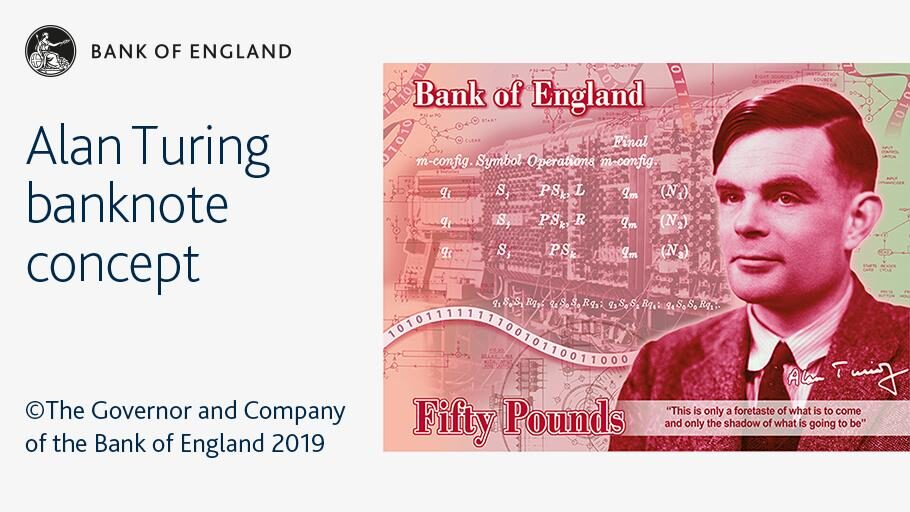Alan Turing will be the face of the new 50 pound note
Alan Turing will be the face of the new £50 note, the Bank of England has announced. Born in Wilmslow, United Kingdom, he is considered one of the fathers of computer science and a precursor to modern computing.

In 2014, the movie "The Enigma Code" was one of the ways to honor the British, whose contributions significantly changed the course of the world war against Nazi Germany.
However, the choice was not easy. The list to choose who would be the new image of the 50 pound note was as follows:
Mary Anning (1799-1847), a self-taught paleontologist known throughout the world for the fossil discoveries she made in her hometown of Lyme Regis.
Paul Adrien Maurice Dirac (1902-1984), whose research revolutionized our understanding of the smallest matter in the universe.
Rosalind Franklin (1920-1958), who pioneered the discovery of the structure of DNA, a critical advance in our understanding of the biology of life.
Stephen Hawking (1942-2018), who made outstanding contributions to our understanding of gravity, space, and time.
William (1738-1822) and Caroline Herschel (1750-1848), an astronomy team of siblings dedicated to unlocking the secrets of the universe.
Dorothy Crowfoot Hodgkin (1910-1994), whose X-ray crystallography research yielded groundbreaking discoveries that shaped modern science and helped save lives.
Ada Lovelace (1815-1852) and Charles Babbage (1791-1871) — visionaries who envisioned the computer age.
James Clerk Maxwell (1831-1879), who made discoveries that laid the foundation for technological innovations that have transformed the way we live.
Srinivasa Ramanujan (1887-1920), whose incredible talent for numbers helped transform modern mathematics.
Ernest Rutherford (1871-1937), who discovered the properties of radiation, revealed the secrets of the atom, and laid the foundations for nuclear physics.
Frederick Sanger (1918-2013) — whose pioneering research laid the foundation for our understanding of genetics.
Alan Turing (1912-1954), whose work on early computers, code-breaking achievements, and visionary ideas about machine intelligence made him one of the most influential thinkers of the 20th century.
The 50 pound note will have the following descriptions
A photo of Turing taken in 1951 by Elliott & Fry that is part of the National Portrait Gallery Photograph Collection.
A table and mathematical formulas from Turing's seminal 1936 paper "On Computable Numbers, with an Application to the Entscheidungsproblem" Proceedings of the London Mathematical Society. This document is widely recognized as fundamental to computing. It sought to establish whether there could be a definitive method by which any theorem could be evaluated as provable or not using a universal machine. He introduced the concept of a Turing machine as a thought experiment for how computers might work.
The Automatic Computing Engine (ACE) pilot machine that was developed at the National Physical Laboratory as a test model of Turing's pioneering ACE design. The ACE was one of the first electronic stored program digital computers.
Technical drawings for the British Bombe, the machine specified by Turing and one of the main tools used to break Enigma-encrypted messages during World War II.
A quote from Alan Turing, given in an interview with The Times newspaper on June 11, 1949: "This is only a foretaste of what is to come, and only a shadow of what is to be."
Turing's signing of the visitors' book at Bletchley Park in 1947, where he worked during World War II.
Ticker tape depicting Alan Turing's date of birth (June 23, 1912) in binary code. The concept of a binary tape-fed machine appears in Turing's 1936 paper.
Source: Bank of England.
